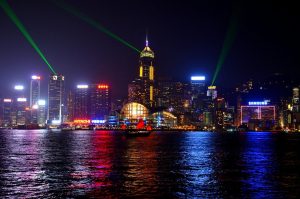With daily recorded COVID-19 cases rising above 100 in early December, Hong Kong has now entered its fourth wave of the pandemic. But despite its densely packed 7.5 million population and proximity to China, the latest surge still leaves the metropolis with just 7,722 infections and 122 deaths since the virus began.
The relatively low numbers are partly down to lessons learnt from its SARS outbreak in 2003, which claimed about 299 lives. When COVID-19 arrived in the city in January, mask wearing was already a near norm. Social distancing across the leisure and hospitality industries was observed, while businesses had enacted working from home policies. Testing and equipment also ramped up, after the government was initially criticized for the speed of its response.
While many precautions have waxed and waned in line with the pandemic, Hong Kong officials have remained steadfast over the city’s uncompromising approach to its borders. Since March, it has been closed to nonresidents arriving from overseas, barring a few small exemptions. Returning residents meanwhile are subject to a compulsory 14-day quarantine, backed up by enhanced screening and enforced by tracking devices.
Hong Kong has rarely before felt so isolated. Normally it is teeming with international business travelers. In 2019, it was also the world’s leading tourist city destination. Visitor arrivals have instead been down by over 95 percent year-on-year every month since February. Travelers from mainland China, who are also subject to a compulsory two-week quarantine on entry, account for 60 percent of Hong Kong’s inbound tourism.
The tight border controls add further shackles onto Hong Kong’s already struggling economy. The pandemic struck just as the city was attempting to shake off the effects of the escalating trade war between China and the United States, and following months of protests over a controversial extradition bill. China’s implementation of a new security law for the territory in June, coupled with the potential for an international backlash, has also made investors and businesses question its status as a global financial hub.
The economy has not registered quarterly growth since the second quarter of 2019. The impact has not been felt evenly either. While the region’s financial services industry has been able to shift business deals from skyscrapers to Skype, sectors more reliant on the physical flow of people – such as retail, hospitality, and tourism – have suffered.
Receipts in Hong Kong’s dining sector fell to a record low in the third quarter. For the quarter of a million directly employed in the tourism industry, income has been weak since the start of the year. The airline, and regional flag carrier, Cathay Pacific also announced in October that it would make over 5,000 redundancies, while the meetings and conventions business is expected to see a 90 percent drop in revenue. The recovery of China’s economy and the arrival of the vaccine may offer some future uplift, but with unemployment at its highest in 16 years it is hard to see how job losses can be stemmed, particularly if the city’s tight border controls persist.
Government support has been fairly comprehensive. The executive has forked out over HK$300 billion in business and household reliefs. In March, HK$10,000 (around US$1,300) was handed to each resident, and a generous wage subsidy scheme was also implemented. With its strain on public finances, the government knows it cannot continue to bailout entire portions of the economy forever.
The question many are asking now is at what stage exactly would Hong Kong consider reopening its borders. Given the city’s population density, the memories of 2003, and the prospect for a rapid exponential rise in cases, authorities appear to be extra cautious. With remote working enabling the lucrative professional services, finance, and ICT sectors – which account for over one-third of the territory’s economy – to remain open, it may have helped cushion the decision to effectively shutter other parts of the economy by erring on the side of caution and keeping borders closed.
The government is clearly aware of the toll imposed on those whose employment depends on open borders, not least the cost of supporting them. Indeed, a proposed travel bubble with Singapore was postponed amidst the latest spike. It would have allowed quarantine free travel between the two cities, a potential lifeline for some in the tourism and hospitality sectors.
A suspension clause in that proposal may be indicative of the levels of COVID-19 exposure the Hong Kong government is willing to accept. The agreement hinged on numerous conditions, including that the seven-day moving average of daily unlinked local cases does not exceed five in either city. With vaccines only just beginning to be rolled out, the implicit high bar for local transmission is likely to raise concerns that authorities will maintain tight border restrictions for much of 2021.
If authorities are determined not to let a single case of COVID-19 originate from outside, then the city may be waiting until mass vaccination and internationally recognized certification comes into play. But as more time passes, the trade-off between reducing infections down to just a smattering and the economic toll of tighter border restrictions will be increasingly in the spotlight. Indeed, Hong Kong’s economy will struggle to spring back if it remains isolated.
Tej Parikh is a global policy analyst and journalist. He tweets @tejparikh90 and his work is archived at The Global Prism.

































